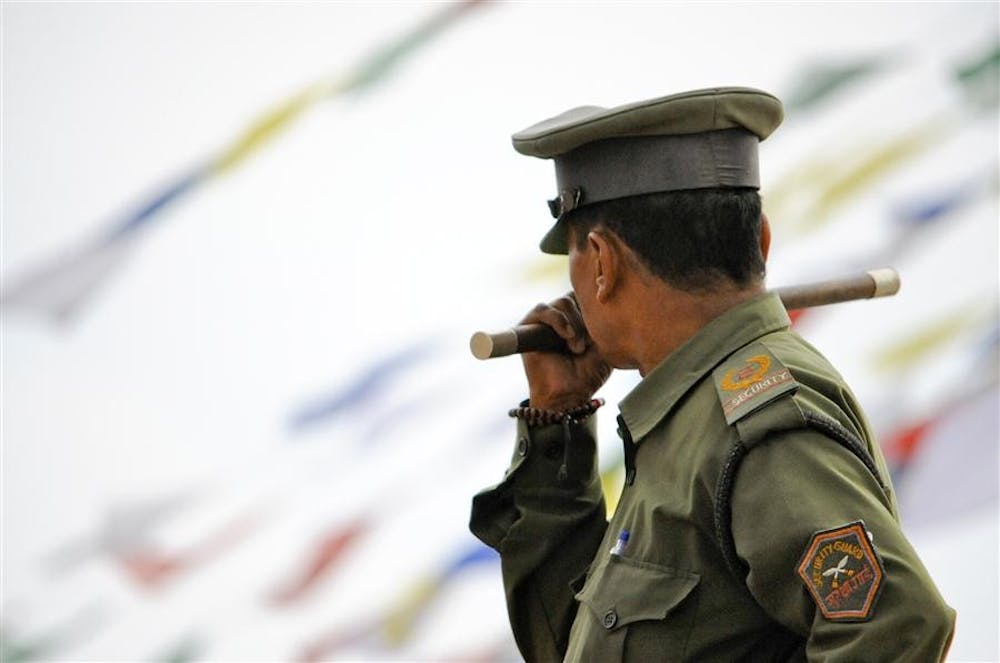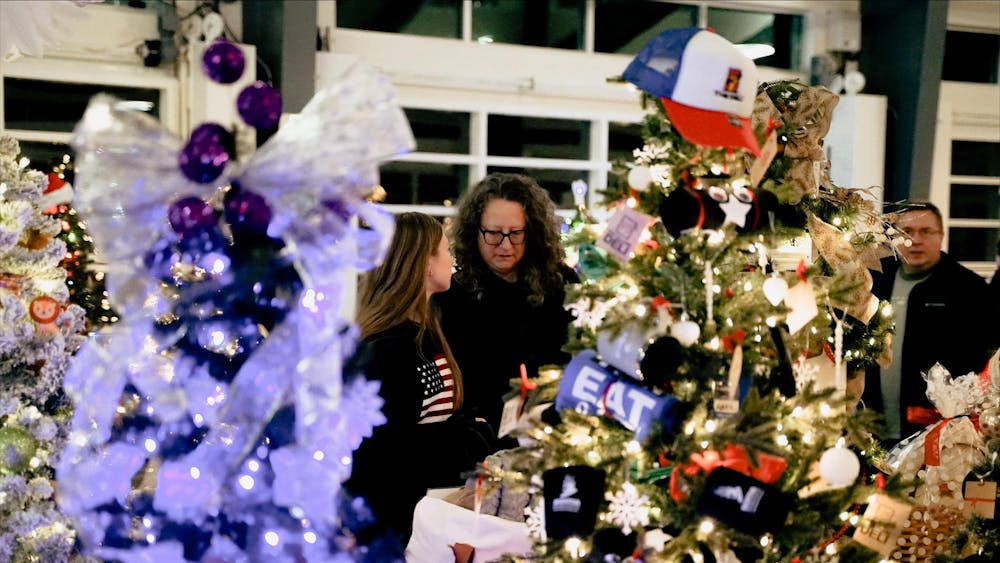It was May 17, 2011, and Buddha’s birthday was upon us.
My fellow volunteers and I started our day as we had any other, breakfast with the comically rude kitchen staff and a language lesson before we were off exploring.
We spent much of our day wandering about Kathmandu aimlessly, valiantly attempting to memorize streets and landmarks we could use to find our way should we ever become lost.
Finally the time came for us to venture to Boudhanath stupa, a large Buddhist place of worship within the Kathmandu Valley in a small community called Jorparti.
Boudhanath stupa is the largest Buddhist temple in Nepal, dominating Jorpartis’ skyline and one of the most important religious sites within the valley.
The site is visited by thousands of Buddhists from all over the world each year. Tibetan refugees have opened restaurants and set up shops, selling trinkets and jewelry to touring foreigners in the square encompassing the stupa.
We had boarded a small van for Jorparti with Rajesh, our young Nepali guide and everyone’s favorite local due to his honest, gentle spirit. If the world were to come to an end, you’d want Rajesh at your side because he’d find a way to make you feel good about it.
Upon our arrival in Jorparti, we were dropped off along the main street and waded through the mass onslaught of crowds.
I had never witnessed such tremendous numbers of people and vehicles, not even in New Delhi.
The air was heavy and thick with pollution from the unusual influx of vehicles in the area. It seemed as though everyone here today came to see Boudhanath.
We eventually fought our way to the gate, which signaled the entrance into the square that housed the stupa.
To put it quite simply, the stupa was enormous. The stone mandala was awe-
inspiring.
Like so many important religious sites around the world, the ominous, towering nature of Boudhanath and the massive eyes which had been painted atop the golden pillar served their purpose in making you feel oh-so-small and insignificant.
Tibetans, Nepali and tourists alike, paid tribute to Prince Siddhartha, Buddha, born on this very day more than 2,500 years ago, right here in Nepal in a community called Lumbini.
Persons of all colors and backgrounds had lit incense and brought flowers and fruit as an offering to the stupa site.
It was incredible to see so many people come together and rejoice on this occasion, but this was a short-lived moment of goodness.
All around us, beggars and homeless Tibetans cried out in desperation; it was difficult to thoroughly enjoy the festivities knowing that so many people around us, even on this day, were suffering.
Child pickpockets were present as well, attempting to distract tourists while their friends did the dirty deed.
They tugged on our bags and attempted to do the same with us, performing their cute stick, and one of our volunteers did lose his iPhone to their tiny sticky fingers.
Rajesh had made an attempt at retrieving the mobile but to no avail. The culprit had vanished into the crowds, and recovery seemed futile.
Nonetheless, the festivities were grand and beautiful. Marching bands played around the square while school children sang and danced.
Some were so touched, they wept at the stupa’s walls. Others spent the day sitting atop Boudhanath’s roof with their families to watch the happenings below.
While fighting my way through the crowd, clutching my bag and trying as best as I could to stay with my group, I overheard what was either an American or Canadian couple (being from the Balkans still have difficulty discerning from the two) proclaim their disdain for the locals and these sort of events.
I was amused to say the least.
We left Boudhanath and said our goodbyes to Rajesh. Though there were some casualties, I was finally feeling as though I had grown to like, or at least to understand, Kathmandu.
On Top of the World: Celebrating Buddha's birthday

Get stories like this in your inbox
Subscribe





